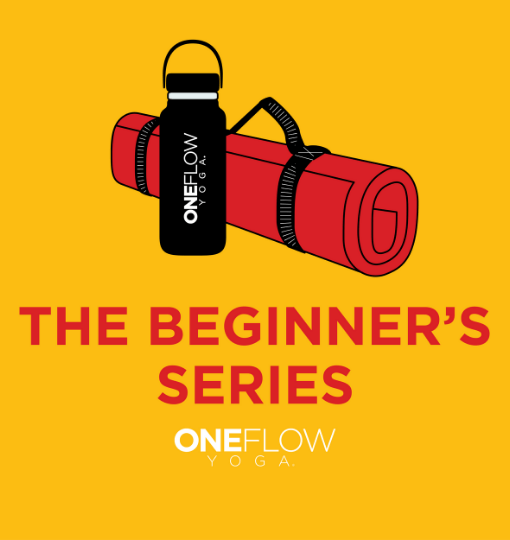You are all about yoga. I mean you get up for down dog and are down for urdhva dhanurasana. Yoga has helped you to strengthen your body, calm your mind, and be a kinder, more loving person.
And it’s fun.
So why does your friend hate it?
Ok, hate may not be the right word but it’s just not her thing.
Or it is her thing, she just doesn’t like the classes and teachers you like.
You don’t get it. You took her to your favorite class at your favorite time with your favorite instructor and boom “magic” should happen. Right?
But it didn’t. Instead she says it was “all right” but is going to stick with her barre + cardio fusion class, yes that’s a real thing, or her Tuesday class at “Yoga Kapow” with Morrie.
Though, confusing, this is common. Keep reading to see what’s going on and what you can do to make a difference.
Reason #1: They are brand new to yoga.
Being new at anything can be kind of scary, like Greek yogurt.
Years ago, Yoplait, a part of General Mills, commissioned a series of studies to understand what people thought about Greek yogurt. And what did they find? “…most people disliked Greek yogurt. It was too sour and unfamiliar.”
Ask any parent who has tried to introduce their child to new foods. It can be a challenge, even if it’s plated playfully.
Most of us do not routinely seek out the unfamiliar. We focus on what we like and what we know, even if it’s not always what we need.
And yoga can be hard to explain. “How does moving my arms and legs around in bendy ways make me stronger and more peaceful? That makes no sense.”
Worse than the unfamiliar is the possibility of being embarrassed.
Yoga is a skill and one you’ve probably worked hard to develop. To your friend, colleague or loved one it might feel like you’ve just invited them to your conversational Japanese class—that you’ve spent the last three years studying.
No one wants to look foolish, or unsure of themselves, especially in front of someone they care about. But, learning a new skill means that they will be new with all the awkwardness that involves. Yay! It’s completely understandable they may not be over-the-top enthused.
Reason #2: They have tried yoga in the past or actively practice at another yoga studio.
If your future yoga buddy the person you hope to bring has any experience with yoga at all, it likely has colored how they view things.
Yoga is better understood as a category rather than as one specific thing. However, most Americans haven’t taken a lot of different yoga at a lot of different places so we think it’s all the same.
That would be like going to one Italian restaurant, The Olive Garden, and thinking, “I guess that’s Italian”.
And you might, rightfully, point out that many people like The Olive Garden. Which may make it harder to introduce them to other types of Italian food.
Again, we like what we like.
If your roommate enjoys a certain style of practice, they might not want to try another one. Would you?
Or if they’ve had an unfavorable experience they might not want to give it another chance. “I’ve been burned by breadsticks before.”
But you never know.
A skillful yoga class has many layers. Beyond the physical, mental, and spiritual layers, there are others such as the narrative of the class, the tone with which it’s taught and the environment. The layers are there to allow people to connect…to get what they want…and maybe what they need.
And you may vibe with one or all of these.
However, just because you enjoy a particular yoga class, book, vacation destination or pizza—deep dish or cracker thin—does not mean your sister will too.
There are, though, a few things you can do bring the practice and people you love, together.
How to Help Set Them Up for Success
Share Your Practice Through How You Live
True Story. A student told me about a conversation she had with her friend.
“She said, ‘What’s different about you?’”
“Did you cut your hair? Did you lose weight? Are you getting more sleep?”
“After I said no to all of those she said, ‘Well you must have done something because you look like you’re glowing.’”
“The only change I could think of is that I have been practicing yoga for about three months consistently.”
When you practice regularly, you might find you change how you move through the world. People will notice and they will actually come to you. It’s the “I’ll have what she’s having” phenomenon.
Invite them
A simple invitation is often most effective, as is making it specific, “Hey want to go to class with me this Wednesday at 6?”
No Pressure
There’s no need for the hard sell. We naturally want to be supportive of people who support us. If someone sees something is important to you and you invite them, chances are they will at least consider it.
Empathy
Want to witness an act of courage? Watch someone walk through the doors of a yoga studio for the first time. You can do a lot to empathize by recalling your first adho mukha svanasana or regularly seeking out new experiences yourself.
Choose an Appropriate Class
This one thing, about all else, can make all the difference. Select a class that is a good fit for them. If they are brand new, choose a class that moves a little slower and works to build foundational skills.
Yes, that means putting your partner’s needs above your own, but they will thank you for it later.
Sometimes we think people will “just pick it up” because they are athletic. But foundational classes also teach the language, postures and layout of a class. You can be incredibly agile but if you don’t’ know what Surya Namaskara B is, it will be challenging to figure it out without help.
Choosing the right class also means choosing a teacher that uses simple, clear language and is personable and encouraging. Being clear is a teaching skill that takes time to develop and practice.
The contrast of this is a teacher who “calls out the posture”. You know you are in this type of class when a teacher keeps offering the names of asana instead of specific instructions in how to get in and out of the postures. That’s not going to be helpful to someone starting out.
It’s also a safety thing. If people don’t know where to put their hands or feet then they often resort to looking around the room. This makes learning yoga more difficult than it needs to be as it distracts them, puts them off-balance and takes them out of the “peaceful-easy-feeling” they thought they were signing up for.
Think about what type of class your friend might enjoy. If they go through life a million miles an hour, it might be difficult for them to connect with a class that has a lot of stillness. Likewise, if they prefer long walks along the beach and quiet they may not want a flow class that is energizing and plays music.
If you can, choose a class that allows a lot of space for people to develop the practice gradually. Going to a class where everyone is moving quickly and seems competitive can feel like going to The Hunger Games of Yoga.
One more thing on class selection; choose a class that is friendly and welcoming. Different classes and different yoga studios have a different feel. Even within the same studio, the energy of one teacher can be much different from another.
Get There Early
Depending on the class size you might want to get there 10-15 minutes before the start of class. This usually allows enough time to figure out where the bathrooms are and get a great spot.
We always recommend people newer to the practice be in the second to the last row, towards the middle. If they are way in the back or on the side they won’t always have a visual reference, which they might find comforting. The same goes for being in the front of the room, which has the added disadvantage of thinking everyone is looking at you. (They aren’t)
Along with a great location, make sure they have what they need for class such as a mat, towel and water bottle. New students often benefit from having a block too.
Check Your Intention
A quick look in the mirror can be invaluable. Check in with why you are inviting this person. Are you trying to introduce them to a practice you find incredibly helpful in your own life, or are you trying to prove something?
Over the years I’ve had many students bring a guest and then ask me to “make it hard”. “…with friends like these.” Later I find out their friend made a comment about yoga being easy, or not a real workout. You have nothing to prove.
Let Them Do Their Thing
If you’ve made a wise choice about the class, then the teacher will look out for the safety and welfare of the student. You might be tempted to give a little extra help, but don’t.
It’s like going to the movies. You’ve chosen a great film, found a great seat and made sure the popcorn was ready to go. Now let them enjoy the show and have their own experience.
A better comparison might be going on a blind date. Some of them work out but a lot of them don’t. And that’s ok.
Relationships take time to build.
You can’t make a yoga class, let alone another person, into something someone else will absolutely love. You can only try to get the two together.
But do try, because it’s absolutely worth it. You are trying to share a practice you care about with a person you care about. What could be better?
And rather than focusing on if there is an “instant connection”, hope for the best thing that can happen—a second date.
Epilogue: “Yoplait’s studies found an interesting hiccup: Even though people said they disliked Greek yogurt, they kept on trying it, again and again, until they learned to like it.”





